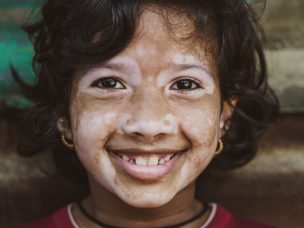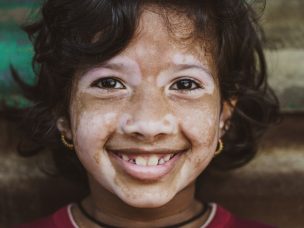Vitiligo
People With Vitiligo Are Less Likely to Get Skin Cancer
Despite the lack of pigmentation, people with vitiligo are at less risk for getting skin cancer, possibly due to increased rates of DNA repair, according to this study. A 2023 study published in the Journal of Investigative Dermatology found that skin mutations were more common in the sun-exposed areas of skin with vitiligo (lesional) than...
Minorities Are More Likely to Have Undiagnosed Cases of Vitiligo
The results of a 2020 study found racial disparities in rates clinician-diagnosed vitiligo. A 2020 study published in JAMA Dermatology indicates that Non-Whites, Latinx, and Hispanic patients in the United States (US) are more likely to live with undiagnosed vitiligo. This affects overall prevalence estimates for the US population. A Vitiligo Study Was Conducted Using...
Diversity in Vitiligo: How the Condition Manifests on Black Skin
Vitiligo isn’t a condition anyone wants to deal with. However, for those with dark skin, it is far worse. In these cases, vitiligo goes beyond a simple skin condition. It morphs into something seriously harmful. This article will explore these differences and the harm created. Keep reading to find out more. Related: Blacks with Eczema...
Fighting the Disease-Ification of Vitiligo: How and Why
This article argues against our current way of looking at vitiligo, asserting that patients would benefit from additional mental healthcare in conjunction with or instead of other clinical approaches. Although vitiligo is not associated with symptoms that can cause direct loss of life, it does carry a significant and profound psychosocial impact. Because most of...
Oral Ritlecitinib for Active Non-Segmental Vitiligo Treatment
Ritlecitinib shows great potential for the treatment of vitiligo. It is effective in reducing F-VASI and improving patient outcomes. Vitiligo is an autoimmune disorder that causes skin depigmentation and affects 0.5%–2.0% of the population worldwide. Nonsegmental vitiligo (NSV) is the most common type, accounting for 85%–90% of cases, and it has an unpredictable clinical course...
Vitiligo Treatment: Complex Path From Topical Creams to Cellular Grafting
The success of treating vitiligo depends on multiple factors, including genetics and the facility’s experience. Surgical treatments like tissue and cellular grafting are the most important therapeutic options for patients with stable vitiligo that don’t respond to other therapies. Vitiligo is a skin disorder that causes well-defined white patches due to a loss of melanocytes....
Dr. Valerie Harvey on her Vitiligo Treatment Strategy
In this MD Newsline exclusive interview with dermatologist Dr. Valerie Harvey, we discuss Dr. Harvey’s vitiligo treatment strategy. MD Newsline: What is your treatment strategy for vitiligo, and how is it tailored to each patient? Dr. Valerie Harvey: “Which treatment I use for vitiligo depends on how much of the patient’s skin is affected by...
Interleukin 1α and Interleukin 18 in Patients With Vitiligo
This study found no association between interleukins IL-18 and IL-1α in the blood sera of patients suffering from vitiligo. Vitiligo is described as a depigmenting disease of the skin which is marked by the occurrence of white cutaneous spots that are often symmetrical and increase with time. In patients diagnosed with vitiligo, there is no...
Koebner Phenomenon in Vitiligo and Atopic Dermatitis in Young Girls
There is a potential risk of the development of vitiligo in pediatric atopic dermatitis patients owing to the Koebner phenomenon. Vitiligo is a skin disorder associated with the loss of melanin from normal skin regions. An abnormal inflammatory response in this disorder indicates a potential association between vitiligo and atopic dermatitis (AD). Pediatric AD may...
More Medical News














